David Frances Barry was one of a handful of photographers who made unique contributions to the historical record, utilizing the new and ever evolving technology of image capture on glass plates. To people in the eastern United States, and in Europe, photographs of the Western Frontier were a new look into a wonderful world beyond their wildest imaginings, and good cabinet card photographs of the right subjects sold like hotcakes. Today, we can still look through Barry's lens into the eyes of major figures - Buffalo Bill, George Armstrong Custer, Army Generals, Sitting Bull, Gall, and a host of other Native Chiefs.
Barry was born near Rochester, New York on March 6, 1854, and in 1861 his family moved west to Wisconsin. Around 1870 Barry worked carrying water for an itinerant photographer named O.S. Goff, a relationship that was to be reestablished a few years later. Not much is known of Barry's life from 1870 until Goff hired him in 1878 to help him in his gallery in Bismarck, Dakota Territory. Here, Barry learned the finer points of photography and became Goff's apprentice, business partner, and employee.
Between 1878 and 1883, Barry traveled to Fort Buford, Fort Yates, and other forts in the Dakota Territory. He went as far north as Fort Assiniboine in Montana. For these trips he used a portable photographic studio in which he took most of his portraits. He photographed famous Native American chiefs, warriors, scouts, and women including Sitting Bull, Rain in the Face, Gall, Red Cloud, and Shooting Star. Barry also photographed some of the most important forts and battlefields of the Plains Wars, military officers including General George A. Crook, soldiers, trappers, and pioneers. In 1883 Barry returned to Bismarck where he operated a studio and gallery. He established a friendship with Buffalo Bill Cody and photographed members of his Wild West Show.
Tatanka Iyotanka, or "Sitting Bull," was a leader in the rebellion against the white invaders, whose vision of Custer's defeat at Little Big Horn that came true under his leadership elevated him to the status of Shamanic Priest/General. After his inevitable surrender in 1881, in 1885 Sitting Bull was allowed to leave the reservation to be an attraction in Buffalo Bill's Wild West Show. He earned about $50 a week for riding once around the arena, a thrill for wide-eyed locals. Some say that he cursed the audiences in his native tongue during the show, but opinions vary. Historian Edward Lazarus wrote that Sitting Bull reportedly cursed his audience in Lakota in 1884, during an opening address celebrating the completion of the Northern Pacific Railway.
Sitting Bull stayed with the show for four months before returning home. During that time, audiences considered him a celebrity and romanticized him as a warrior. He earned a small fortune by charging for his autograph and picture, although he often gave his money away to the homeless and beggars.
Touring with the Wild West show, Sitting Bull met Annie Oakley. He was so impressed with Oakley's skills with firearms that he offered $65 for a photographer to take a photo of the two together. The admiration and respect was mutual. Oakley stated that Sitting Bull made a "great pet" of her. Over time, Sitting Bull's respect for the young sharpshooter grew. Oakley was quite modest in her attire, deeply respectful of others, and had a remarkable stage persona despite being a woman who stood only five feet in height. Sitting Bull felt that she was "gifted" by supernatural means in order to shoot so accurately with both hands. As a result of his esteem, he symbolically "adopted" her as a daughter in 1884. He named her "Little Sure Shot"— a name that Oakley used throughout her career.
Annie Oakley (1860 – 1926), born Phoebe Ann Mosey, the iconic American sharpshooter and exhibition shooter was a major attraction in Buffalo Bill's Wild West show. Perhaps Oakley's most famous trick was her ability to repeatedly split a playing card, edge-on, and put several more holes in it before it could touch the ground, while using a .22 caliber rifle, at 90 feet.
Here Oakley poses with an unidentified Native American man. He is probably an extra in the Show's cast, wearing whatever "Indian" costume components in the studio dressing room that fit well. Commercial studio portraits from this era, and Wild West Show publicity photos were often made with such indifference to authenticity or tribal custom. D.F. Barry's Native American portraits avoid this and he is careful to identify the sitter, with them in their accustomed regalia. Few of his images, alas, were taken in indigenous settings, showing actual habitat and living conditions, as do the incredible photos of Edward Boos, the subject of another blog entry.
D. F. Barry was often part of the Buffalo Bill entourage, providing crisp portraits of the major players. No doubt he worked with with Nate Saulsbury, originator of the poster above. Salsbury, Buffalo Bill's publicist, was played by Joel Gray in Robert Altman's delightful 1976 look into the world of the Wild West Shows "Buffalo Bill and the Indians, or Sitting Bull's History Lesson," with Buffalo Bill played by none other than Paul Newman, and Harvey Keitel and Geraldine Chaplin in supporting roles to top things off.
Browse our entire selection of 978 Barry photos, or narrow your search by adding "Native Americans," "uniform," or "feathers."

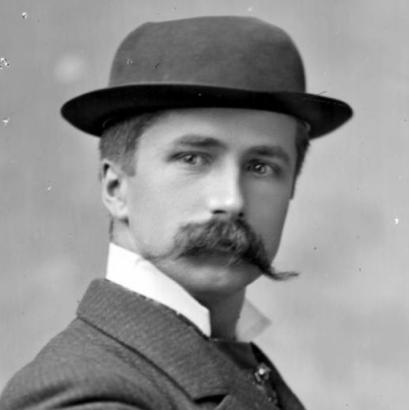
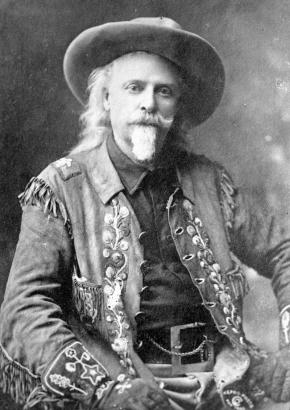

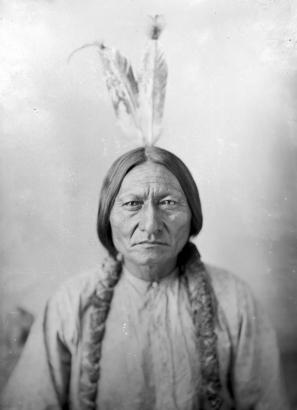
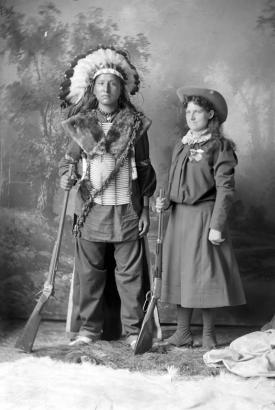
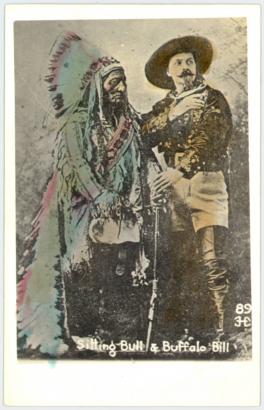

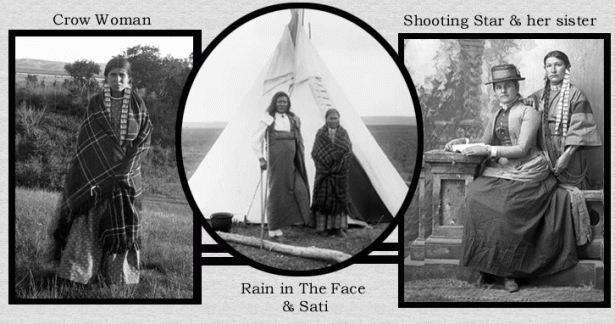
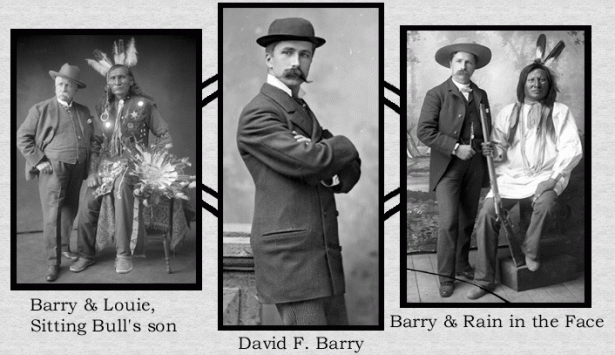
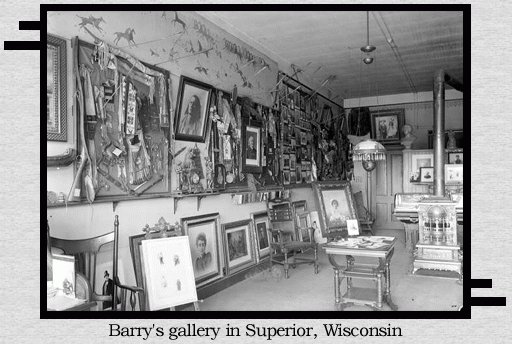
Comments
I'm holding a stack of his
I'm holding a stack of his prints in my hands, shuffled away in our general "North Dakota Photographic Collection," once again unimpressed with my department's earlier incarnations' efforts to organize such material. At least they are preserved, but they deserve some reprocessing.
Hi Brian,
Hi Brian,
We do wish you luck in preserving your photographic collection. It is sometimes a struggle in a lot of institutions, due to funding and staff time. We sometimes suffer from this as well. All the best to you!
I have a Barry photo (Barry .
I have a Barry photo (Barry ... Bismarck) of five unidentified North Dakota pioneers, most likely taken in Barry's studio, based on the background. One man is probably my by Great Uncle Henry. Another is probably his brother, who stayed in ND for 18 months. The other 3 are probably neighbors. My great uncle left MI for ND in 1885, so the photo was probably taken between 1885-1890, as Barry left for Wisc in 1890. Can this photo be dated and/or connected to a nearby address?
I've read that Barry moved
I've read that Barry moved back to Wisconsin in about 1890 and operated a "gallery." Does anyone know if he continued to photograph commercially (or even just for himself) and if so what was the general scope of his work during this later period of his life?
I am a books and photographs dealer and have just acquired a rather remarkable group of circa-1900 large format negatives shot in and around Superior, WI and would love to be able to attribute them to Barry. Thanks!
Thanks for commenting, Martin
Thanks for commenting, Martin. According to Barry's biography in The Little Shadow Catcher = Icastinyanka Cikala Hanzi, by Thomas M. Heski, he did indeed return to Superior, Wisconsin, in 1890. While this doesn't necessarily guarantee that your negatives are Barry's, it does help your case!
Martin, contact the Douglas
Martin, contact the Douglas County Historical Society in Superior, Wisconsin They have the largest collection of his work along with countless letters and artifacts from his collection.
I'm the Business Manager of
I'm the Business Manager of the Douglas County Historical Society in Superior WI. I have a collection of Barry photographs from his time out west and while in Superior. We also have some glass plate negatives he took locally. I would be very interested in talking to anyone here regarding Barry. We have an exhibit of Barry photographs and other items he collected out west. We would be very interested in seeing and getting copies of any photos of Superior even if they are not Barry's. We can also help in identifiing if they are. contact me at dchs@douglashistory.org
Thanks, Jon! I have forwarded
Thanks, Jon! I have forwarded your request to our Photo Administrator, who will get in touch.
I work and volunteer at the
I work and volunteer at the Douglas County Historical Society in Superior, Wisconsin. The society has the bulk majority of the David F. Barry collection of items given to them years ago. They have many photographs that Barry did and items that were given to Barry. The negatives in the possession of the library in Denver. Barry did set up a studio in superior and worked as a photographer continuing his craft. He even did a lot of commissioned work, that the historical society has in their possession. Barry passed away in 1934 and he is burried in Superior, Wisconsin at The Greenwood Cemetery.
In The Billings Gazette,
In The Billings Gazette, dated 11/01/98, a collection of Barry photos was purchased by Chris Kortlander. Any idea what became of those?
Add new comment